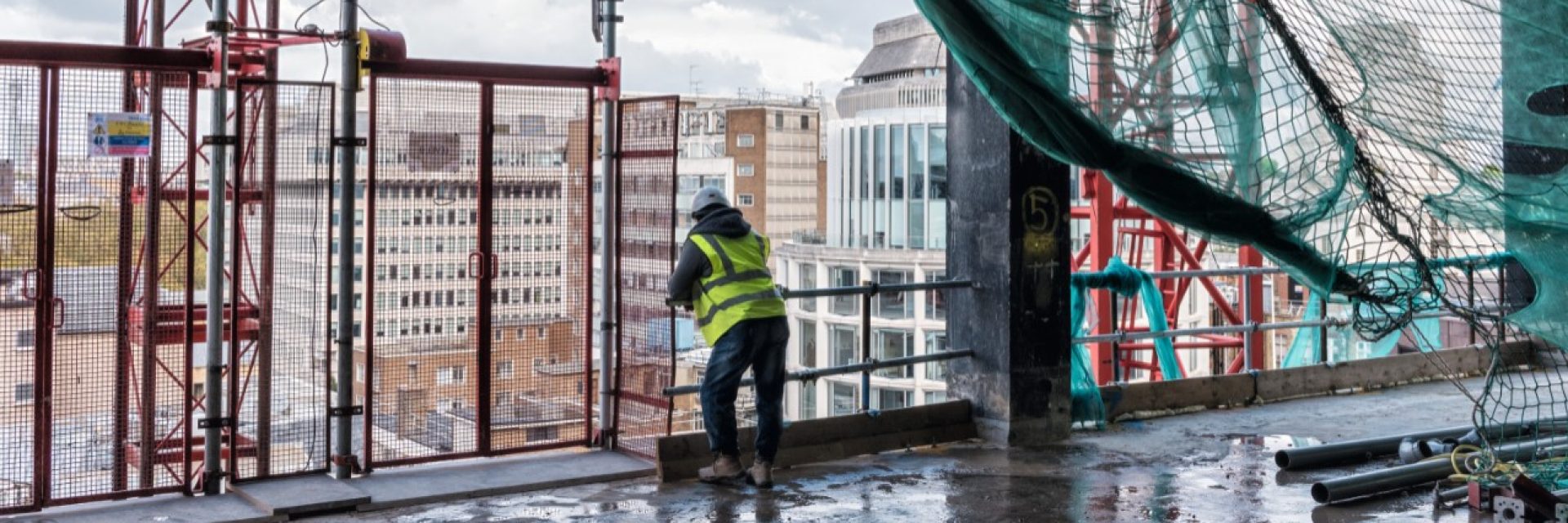MAPPING REBAR AT A LONDON ART DECO LANDMARK
How to find rebar efficiently in 18,000 square meters of concrete


THE CHALLENGE
Eagle House is a 27 storey mixed-use tower in the fashionable Shoreditch area of central London. The developer, Mount Anvil, took over the project in 2013 after it had stalled mid-build. They inherited a complicated patchwork of existing concrete structures, some of which were recent, but others dated back to the 1930s Art Deco icon from which the modern project gets its name. Needless to say: the older the structure, the patchier the existing documentation.
This presented a lot of unknowns. Before construction could continue, Mount Anvil needed to create a reliable as-built plan of the objects embedded within the existing concrete.
THE SOLUTION
The project’s surveyor, Murphy Surveys, ultimately decided to use the Hilti PS 1000 X-Scan detection system for the task. The PS 1000 X-Scan is the best option when very large areas and a lot of documentation are involved. As Eagle House is built on over 18,000 square meters of reinforced concrete (194,000 sq. ft.), it was clear that scanning speed, data reliability and automated documentation capabilities were key to preventing delays and other unwelcome surprises later in the build.
The PS 1000 X-Scan is a pulse radar scanner, a pioneering non-destructive testing technology, which can detect not just steel reinforcing bars but also pre- and post-tensioning tendons, metal or plastic pipes, electric cables, glass fibre cables and cavities – at depths of up to 300mm, even where layers overlap. This concrete imaging intelligence, combined with the real-time 2D results displayed on the large color screen, meant that the surveyors could mark up the building as they scanned. Using Hilti PROFIS Detection software, the data could be analyzed in more detail back in the office, and transferred easily to the master 3D or BIM models of the as-built structure. The same software could partially automate the last step in the process - writing the final reports for delivery to the client.
All of this helped to save time, costs and labor by using a non-destructive testing method and automated survey data management workflow before any further drilling work.
Equipment needed for this concrete scan
Hilti PS 1000 X-Scan
PS 1000 X-Scan is designed for scanning large areas and identifying all common objects embedded deep within multiple layers of concrete.
The color screen shows real-time imaging results in 2D. When used with the optional PSA 200 tablet, you can view and analyze embedded objects live in 3D too.
Your scan results can transferred to master drawings or BIM models using PROFIS Detection software.
See all detection systems
No matter if you need to scan concrete all day, every day or just every so often, Hilti can help you find an efficient solution. The range spans from pocket-sized multidetectors to state of the art non-destructive structural analysis equipment.
More informationCase study: structural analysis in a high-tech hub
After some careless drilling caused fears of a post-tension cable blowout, Hilti Ferroscan devices were chosen as a quick and straightforward way to the check structural integrity of a concrete slab
Non-destructive post-tensioned cable testing in practice

